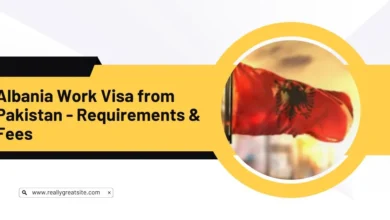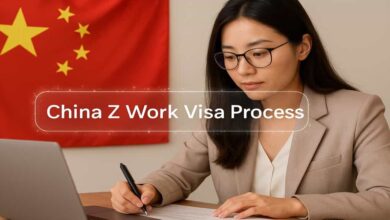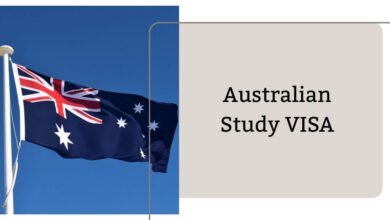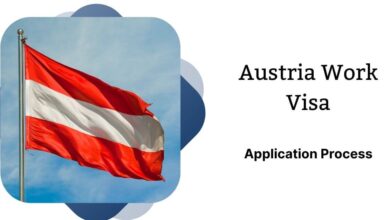US Work VISA Immigration Process with Family Dependent VISA
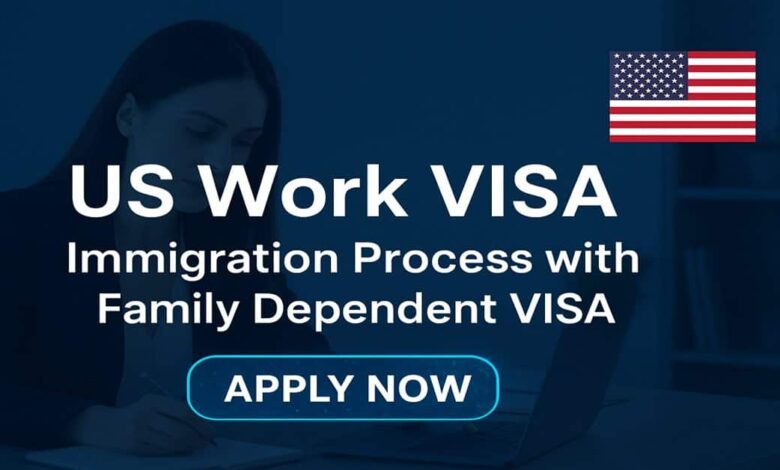
Imagine landing a US job that pays $90,000 a year, values your five years of experience, and offers the flexibility to work remotely or even from an office downtown if that’s your vibe. Whether it’s a full-time tech position, a creative role in marketing, or a specialized job in healthcare, this opportunity isn’t just about a paycheck it’s about opening doors to a life-changing adventure for you and your family.
Secure a Job Offer:
Job Search and Application:
Getting a job offer from a US company is the first thing you need to do to get a US work visa. Start by:
- Researching: Do some research to find US businesses and fields that match your skills and experience. You can find relevant job openings on business websites, professional networks, and online job boards.
- Networking: Get in touch with US-based experts in your area. Making connections can help you find out about job openings that aren’t promoted and give you useful information.
- Applying: For each job you apply for, make sure your resume and cover letter are specific to that job and highlight your skills and how they match the standards of the job.
Interviews and Job Offer:
Once you have applied for positions:
- Interviews: You’ll be asked to come in for interviews if your application is accepted. Carefully study to show that you are qualified and excited about the job.
- Job Offer: When you get a job offer, talk to your possible employer about sponsoring your visa to make sure they are willing to do so.
Check Also: Truck Driver Work VISA Immigration in US, UK, Canada, Australia
US Work Visa Selection and Application Submission:
Visa Category:
Your job, your skills, and the type of job offer will determine which type of visa you need. Some common groups are:
- O-1 Visa: For people who are very good at sports, the arts, education, business, the sciences, or education.
- H-1B Visa: For specialty occupations requiring a bachelor’s degree or equivalent.
- L-1 Visa: For intracompany transferees.
Petition Filing:
After securing a job offer:
Employer Petition: The US Citizenship and Immigration Services (USCIS) will receive a petition from your workplace. This petition will be in the form of Form I-129 for nonimmigrant workers or Form I-140 for immigrant workers.
Gathering Supporting Documents:
Get all the paperwork you need to support your visa application, like proof of qualifications, job verification letters, and school transcripts.
Processing Time:
Visa handling times can be very different. Keep in touch with both your workplace and the USCIS to find out what’s going on with your application.
When Can You Bring Your Family to the US?
You can bring your family to the US either at the same time you apply for a work visa or after your visa is accepted. A quick summary is given below:
Simultaneous Application:
- Apply Together: If you are applying from outside the US, you should bring your family’s dependent visa forms with you to the US embassy or consulate.
- Required Documents: passports, birth certificates (for children), marriage certificates (for spouses), proof of income, and other papers to back up the claims.
After Primary Visa Approval:
- Apply Separately: You and your family can apply for their dependent visas separately. Once your work visa is accepted, they can do so in your home country or after you get to the US.
- Processing Time: The time it takes to process a dependent visa varies, but it’s usually faster once the main visa is accepted.
Dependent US Visa Categories:
- H-4 Visa: For dependents of H-1B visa holders.
- L-2 Visa: For dependents of L-1 visa holders.
- O-3 Visa: For dependents of O-1 visa holders.
Professions and Qualifications:
Through a preference system, the US immigration system gives more weight to certain jobs and skills. The following are some of the most sought-after jobs and credentials:
- Advanced Degrees: Professionals with advanced degrees in STEM areas (science, technology, engineering, math) are often given the job.
- Specialized Skills: People with specific skills in fields like education, healthcare, and study are also in high demand.
- Exceptional Ability: People who are very good at the arts, studies, or business may be able to get special visas.
Overall Costs Involved in US Work VISA and Dependent VISAS:
There are different fees involved in getting a US work visa or a dependent visa. Here is a list of the usual costs you can expect:
USA Work Visa Costs:
- USCIS Filing Fees:
- Form I-140 (Immigrant Petition for Alien Worker): $700
- Form I-129 (Petition for a Nonimmigrant Worker): Varies by category (e.g., H-1B: $460, L-1: $460)
- Form I-485 (Application to Register Permanent Residence or Adjust Status): $1,225 (includes biometrics fee)
- Department of Labor Fees (if applicable): Labor Certification Application: $1,000
- Premium Processing Fee (optional): Form I-140 and I-129: $2,500
- Attorney Fees: Depending on how hard the case is and how much experience the lawyer has
USA Family Visa Costs:
- USCIS Filing Fees:
- Form I-485: $1,225 per person (includes biometrics fee)
- Form DS-260 (Immigrant Visa Electronic Application): $325 per person
- Medical Examination: Depending on the service and where you are
- Affidavit of Support: There is no fee, but the sponsor must meet certain financial standards
- Embassy/Consulate Fees: Depending on where you live and the type of visa you have.
Additional Costs:
- Travel Expenses: flights, lodging, and transportation for moving and visa interviews
- Document Translation and Certification: If your documents are not in English
Estimated Total Cost;
The process of getting a US work visa and a dependent visa can cost anywhere from $5,000 to $20,000 or more, based on things like the type of visa, the size of the family, and the legal fees.
Employment for Dependents:
People with children who come to the US on H-4 or L-2 visas usually can’t work at first. However, recent changes have made it possible for some people with an H-4 visa to get permission to work in certain situations.
Travel Plan:
Dependent visa holders can usually bring family members into and out of the US as long as the main visa holder’s status is still legal.
US Dependent Visa for Family:
If you are working in the United States on a work visa, your family may be eligible for a US dependent visa for family members. This allows spouses and children to live in the US legally while you pursue your employment.
Bringing Family on US Work Visa:
Bringing family on a US work visa involves understanding the visa categories that permit dependents, such as H-1B, L-1, or O-1 visas. Proper documentation and timely applications ensure your loved ones can join you without delays.
US Employment Visa Application:
The US employment visa application process typically requires a job offer from a US employer, submission of supporting documents, and sometimes a visa interview. Understanding the requirements helps streamline the process for both primary applicants and dependents.
L-1 Visa Family Process:
For L-1 visa holders, the L-1 visa family process allows spouses and unmarried children under 21 to apply for L-2 visas. L-2 dependents may also be eligible to study or work in the US, depending on current immigration rules.
Green Card Process for Dependents:
If you’re pursuing permanent residency, the green card process for dependents enables spouses and children to obtain lawful permanent resident status alongside the primary applicant. This ensures long-term stability for the entire family.
US Immigration Benefits for Work Visa Dependents:
US immigration benefits for work visa dependents include the ability to reside in the US, access education, and, in some cases, work authorization. Knowing these benefits helps families make informed decisions during the visa process.
Conclusion:
Securing a US job with the right salary, experience, and work flexibility opens doors to new opportunities for you and your family. With careful planning, tailored applications, and the right visa guidance, the move becomes smooth and manageable. Embrace this journey as a chance to start an exciting new chapter in the United States.
Frequently Asked Questions:
What is the first step in obtaining a US work visa?
The first step is to secure a job offer from a US employer who is willing to sponsor your visa application.
What types of work visas are available in the US?
The H-1B visa is for people who work in specialty jobs, the L-1 visa is for people who are moving within their own company, and the O-1 visa is for people who are very good at their job.
